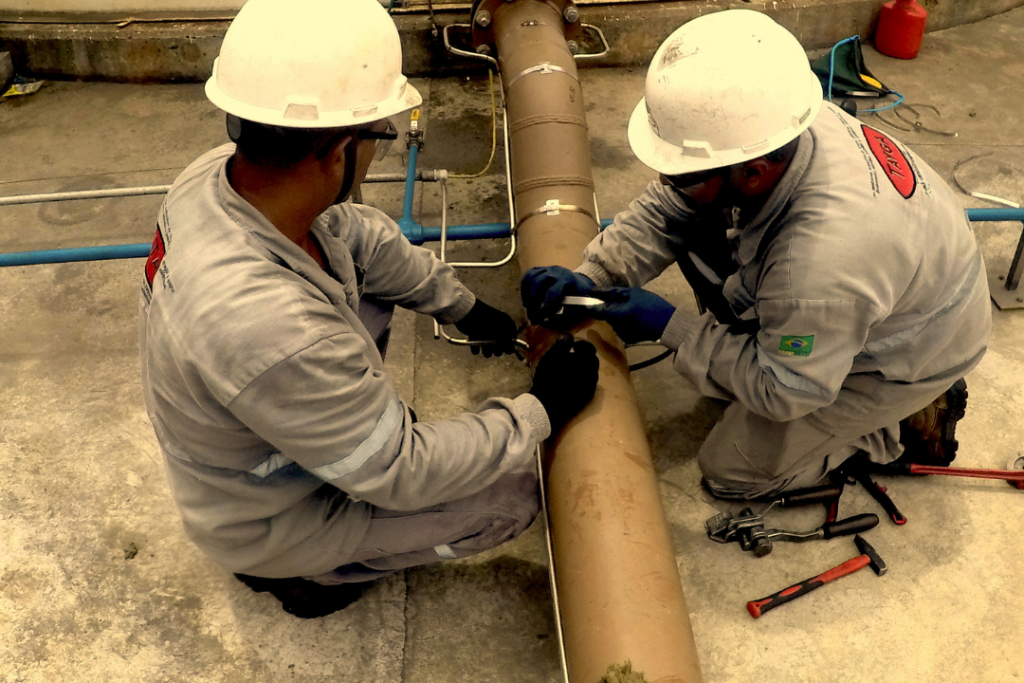“Correct sizing of Steam Tracing systems is essential to ensure energy efficiency, adequate thermal performance and durability in industrial processes. In this article, we exploit the critical steps and variables to perform accurate calculations, ensuring that the heating solution adapts to the specific needs of each application.”
Importance of correct sizing
Steam trait is widely used in industrial processes for maintain the temperature of pipes and equipment, Preventing freezing, loss of viscosity or unwanted changes in fluids and gases. An inappropriate sizing can result in:
- Thermal efficiency loss: Superdimensioning or underdimensioning impairs temperature control.
- Energy waste: Excessive vapor consumption.
- System Failures: Poor thermal distribution or condensed accumulation.
A Tayga, with your precise technical approach, Develops personalized solutions based on strict engineering calculations to optimize performance and minimize costs.
Critical variables in the sizing calculation
Steam trace sizing involves considering specific variables to ensure that thermal energy is distributed efficiently. The main variables are:
- Maintenance temperature
- What temperature is required to keep the fluid or gas in the ideal state?
Example: Viscous oils require high temperatures to maintain fluidity.
- What temperature is required to keep the fluid or gas in the ideal state?
- Heat losses
- Determine the amount of heat that the system loses to the environment through the pipe or equipment.
Factors such as ambient temperature, line length and insulation influence this calculation.
- Determine the amount of heat that the system loses to the environment through the pipe or equipment.
- Pressão e Tipo de Vapor
- Vapor saturado or superaquecido afeta a capacidade de transferência térmica. Pressões mais altas aumentam a densidade do vapor e sua eficiência.
- Material da Tubulação
- Tubos metálicos (como aço carbono ou inox) têm condutividade térmica maior do que materiais plásticos.
- Thermal insulation
-
- A espessura e o tipo do isolamento (fibra de vidro, lã mineral, espumas) impactam na capacidade de manter o calor e minimizar perdas.
- Comprimento da Tubulação e Componentes
- O número de flanges, válvulas e suportes atua como pontos frios (heat sinks) e exige calor adicional para compensação.
- Environmental conditions
- Ambientes externos com temperaturas baixas, vento e umidade aumentam as perdas de calor e exigem cálculos mais precisos.
Etapas do Cálculo de Dimensionamento
- Calculation of heat losses
The basic equation to determine heat loss is:
Q=U×A×ΔTQ = U times A times Delta TQ=U×A×ΔT
Where:
- Q = Heat loss (W you kcal/h)
- U = Global heat transfer coefficient (W/m².K)
- A = Surface area of the piping (m²)
- ΔT = Temperature difference between fluid and environment (K)
This calculation considers the diameter, length and insulating conditions of the pipe.
- Determination of the necessary vapor capacity
The amount of vapor required to compensate for heat losses is calculated by:
m=Q(hg−hf)m = frac{Q}{(h_g – h_f)}m=(hg−hf)Q
Where:
- m = Steam flow (kg/h)
- Q = Heat loss (kcal/h)
- h_g = Saturated vapor enthalpy (kcal/kg)
- h_f = Condensed water enthalpy (kcal/kg)
This calculation determines the amount of vapor necessary to maintain the temperature.
- Cold Point Compensation
To compensate for flanges, valves or brackets that dissipate heat more intensely, Additional values apply to calculated vapor flow. Each component has a correction factor that must be added to the main calculation.
Trace selection and personalized project
Based on heat loss calculations and steam demands, Tayga projects the best steam trace solution, considering:
- Diameter and quantity of trace lines
- Vapor pressure To optimize thermal transfer.
- Specific insulating materials to avoid energy losses.
Besides that, The system is adapted to facilitate the installation and maintenance, ensuring an operation efficient e segura throughout the lifetime.
Tools and software used
To Tayga uses Specialized thermal calculation software that allow the simulation of different scenarios and the precise definition of solutions. This includes:
- Automatic calculation of thermal losses.
- Determination of the ideal vapor quantity.
This technical rigor ensures that the project meets the specific needs of each client, with the lower power consumption possible e alta performance.
Benefits of precise sizing
- Energy Efficiency: Lower steam consumption.
- Cost Reduction: Elimination of steam waste and unnecessary maintenance.
- Operational Security: Guarantee of ideal temperatures without risks of overheating or failures.
- Sustainability: Reduction of vapor emission and better use of energy resources.
Why choose Tayga?
Na tayga, Steam trace projects are conducted with technical rigor by our team of Specialized Engineering. Instead of standardized solutions, we offer:
- Personalized calculations for each project.
- Use of Advanced Technologies in sizing software.
- Efficient solutions that guarantee economy and high performance.
- Full follow -up, from project to installation and maintenance.
Conclusion
The calculation of sizing in steam trace systems is an essential technical process that defines the success and efficiency of industrial operations. A Tayga, with your approach to Precision Engineering, ensures that each solution is designed to meet the process requirements, minimizing costs and maximizing performance.

DDiscover how Tayga heating solutions can transform your industrial operations.
Get in touch today to learn more about our services and how we can help you achieve excellence on your next project.

We are available through do site (click here) or by e-mail contato@taygahs.com or at phone and Whatsapp (21) 9.8819-3687.
We also recommend reading our materials on the heating and insulation systems implemented by Tayga (just click and you will be redirected):


